The women who saved the rugby world cup
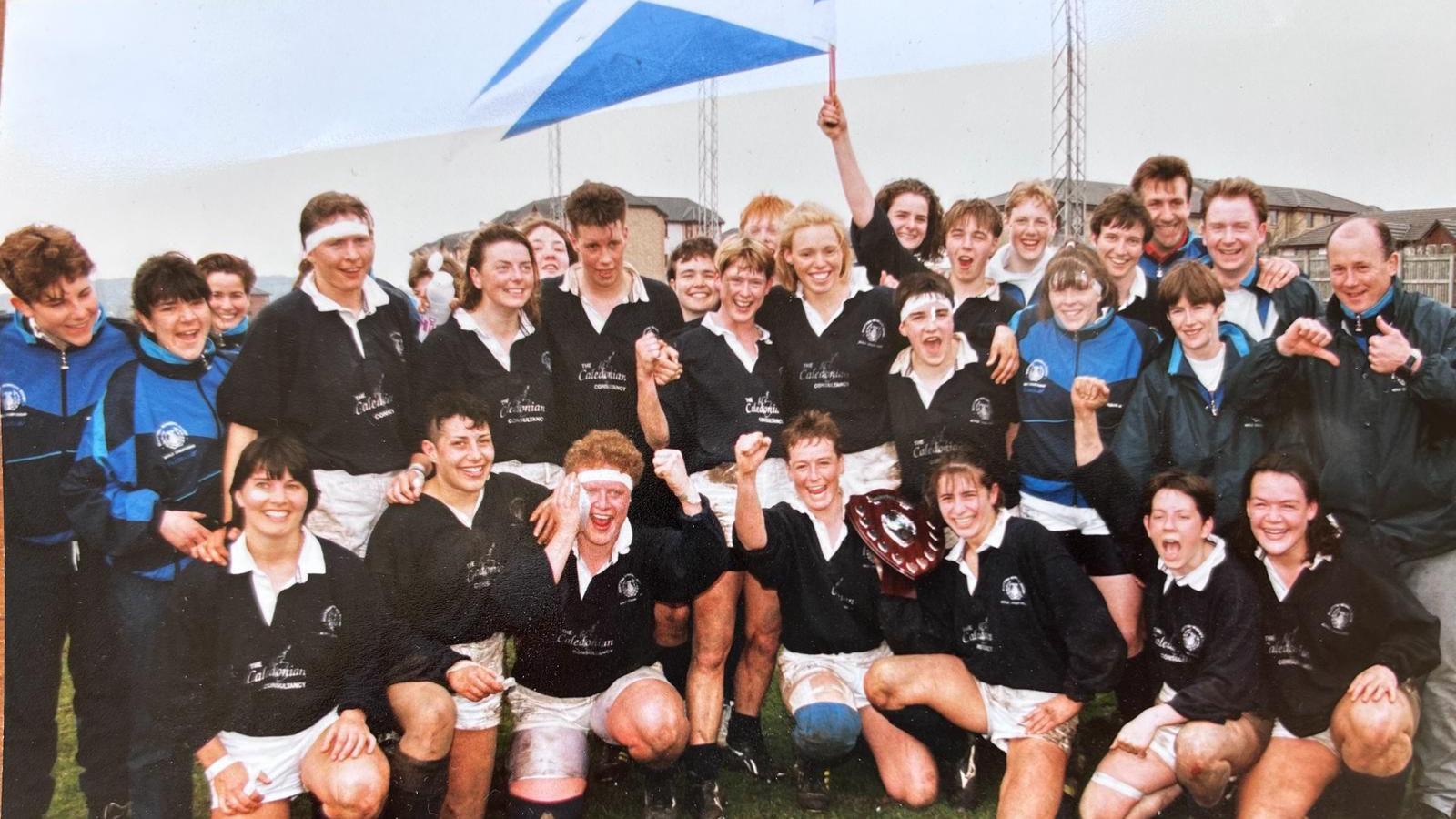
Scotland's women had only been together a year before the 1994 tournament
- Published
On a driech Wednesday night in January 1994 women from the Scotland rugby squad headed to the Todd’s Tapp pub in Leith after a freezing training session at Edinburgh Accies ground.
They were unusually quiet, utterly fed up.
They had been training hard and putting maximum effort into fundraising to cover the costs of their trip to the World Cup in the Netherlands.
But with just three months to go it had been cancelled.
The host nation had pulled out after a wrangle with the world rugby authorities, over permissions to hold the Women’s Rugby World Cup.
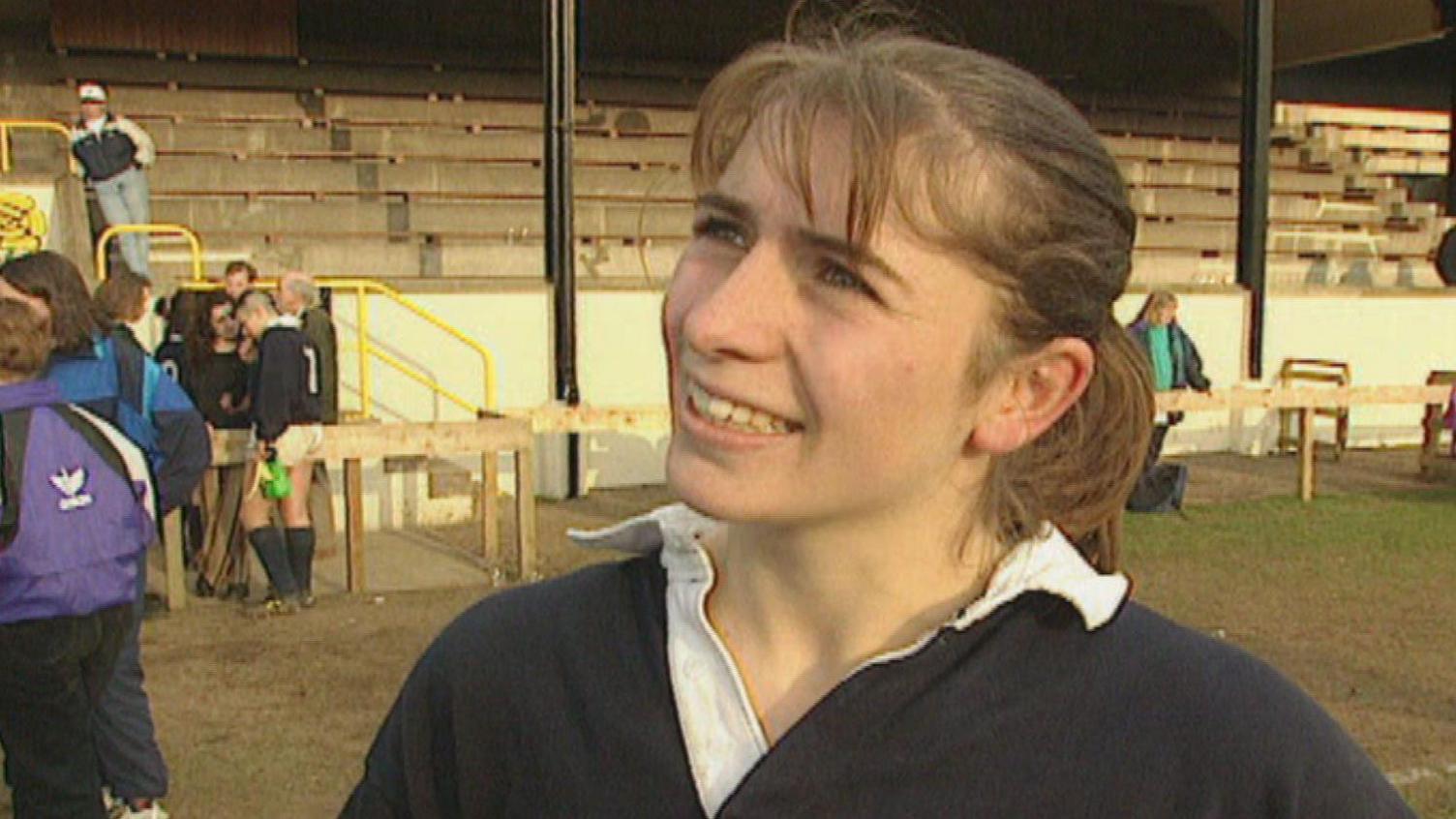
Kim Littlejohn was Scotland's captain in 1994
The Scotland women's team had only been going a year, with just two international matches under their belt.
The World Cup was going to give them much needed experience against more established teams.
It was that night in the pub that a quiet, determined revolution started. They would run the tournament themselves.
The Scotland Women’s team weren’t part of the official rugby union set up.
They existed alongside, but with very good relations with, the Scottish Rugby Union and their referees and match officials .
They didn’t need anyone’s permission to play.
If calling it a World Cup was an issue then they would call it the World Championships.
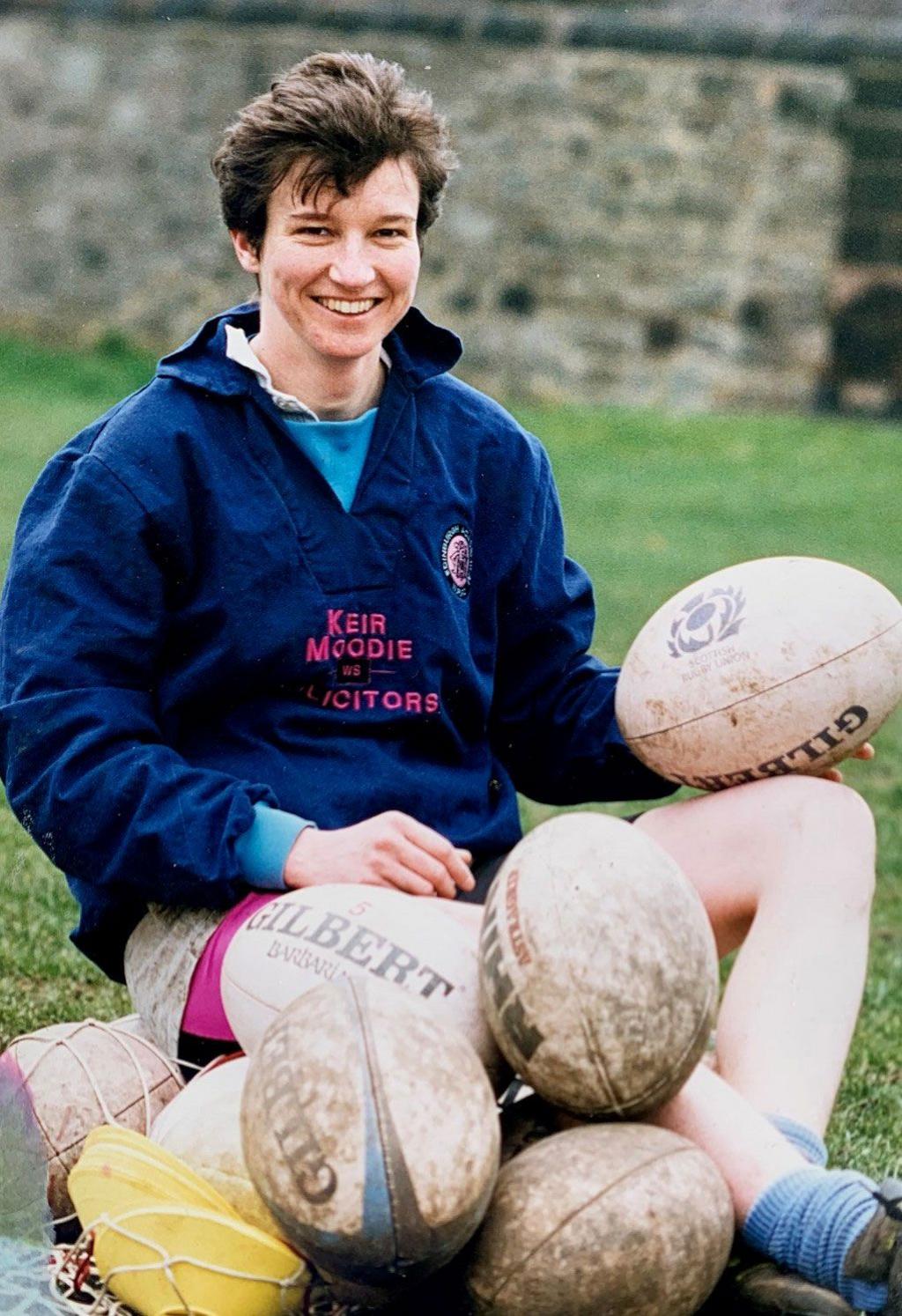
Sue Brodie was chair of the Scottish Women’s Rugby Union
Sue Brodie, as well as a winger, was the team administrator and chair of the Scottish Women’s Rugby Union.
Her day job was running Meadowbank Sports centre and that meant she had access to a Fax machine.
Exactly 30 years later, Sue recalls: "We thought let’s just invite the teams here and see what happens, if they can get here, we’ll play. Everyone just wants to play.
"It was kind of where we were at the time, we had to organise everything ourselves anyway.
"We were all working full-time, or students or bringing up families by day, training and playing at night, and we just thought - 'Oh I can’t believe this, we’re going to have to organise this now' - with 90 days to go."
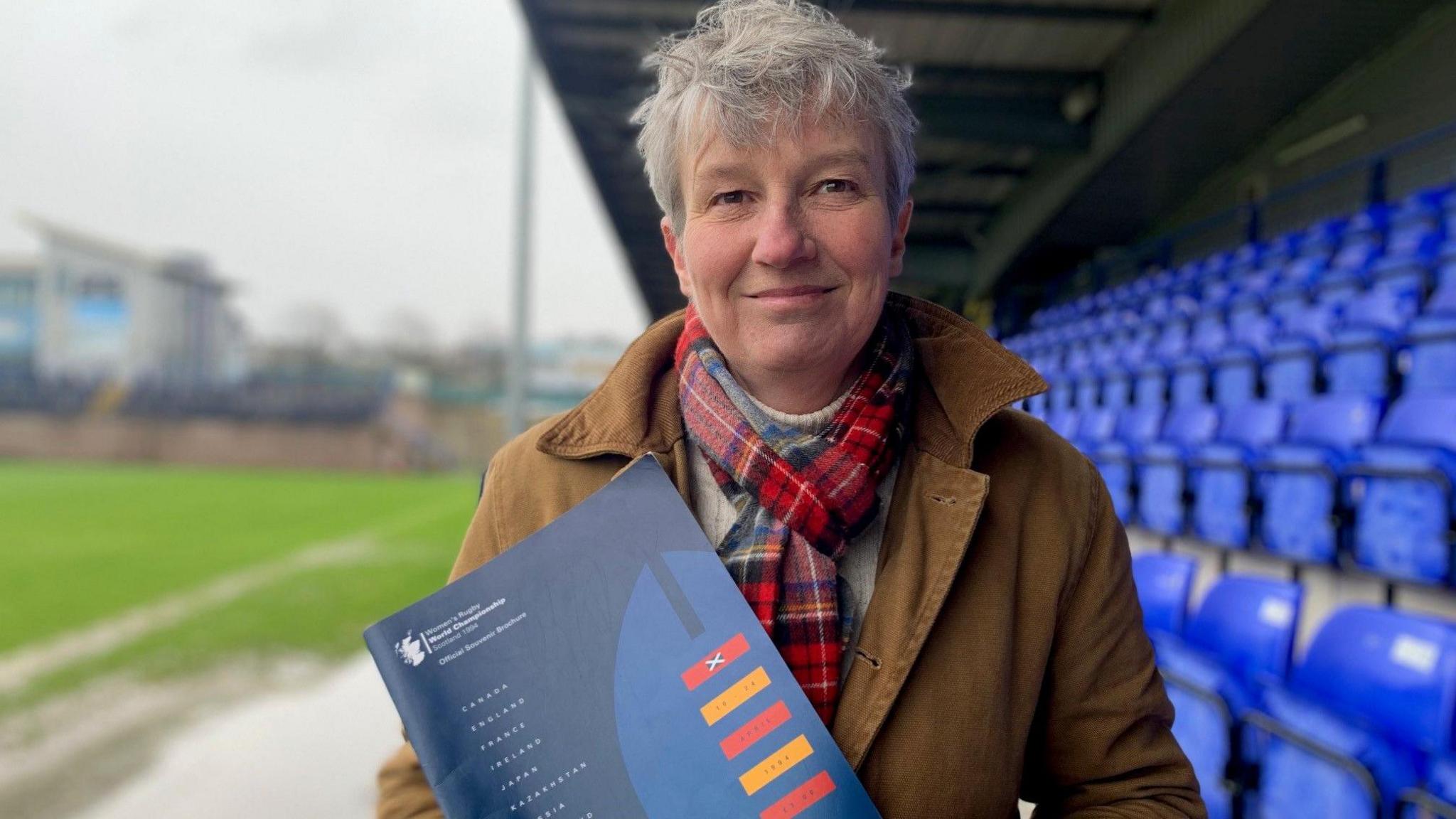
Sue Brodie with her World Cup programme from 1994
Sue readily admits that they couldn’t have done it without the rugby community and local people and businesses who volunteered help in so many ways, caught up in the excitement of bringing a world tournament to Edinburgh.
A dozen international teams signed up, and sorted their travel and accommodation but when the Russians arrived they were far from sorted.
An appeal on Radio Forth resulted in a coach company dropping holidaymakers off at Manchester airport, taking the Russians back up the road to Edinburgh.
They were given accommodation by a nurses home in Livingston, which had been emptied for the Easter holidays, and they were fed for two weeks by the Livingston Rugby Club.
When the tournament got going that positive press and media attention in the lead-up meant that the Scotland players saw crowds at their matches like never before.
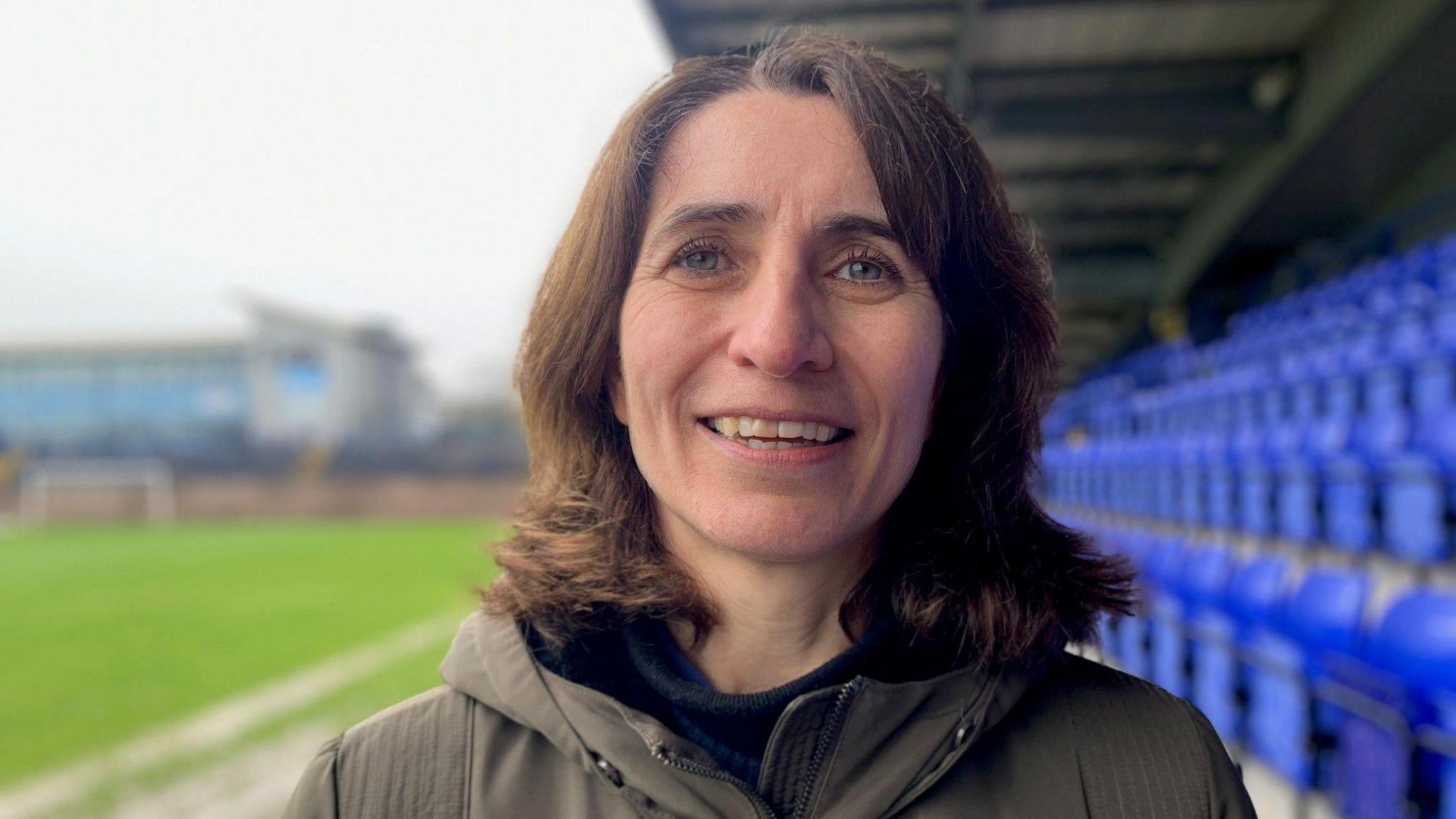
Looking back, Kim Littlejohn says it was a really special time
Kim Littlejohn, a software developer by day and Scotland captain by night, was constantly on the TV.
Standing by the pitch at Meggetland in Edinburgh where they played their group games, she can still hear the noise of the crowds as the team ran out of the tunnel and on to the pitch.
"The sound of people cheering for us, it was amazing," she said.
"It was a really special time. We went into that tournament, a very new international team, green behind the ears but bubbling with energy and looking to learn, and we did."
The Scotland team weren’t the only Scottish players who enjoyed a taste of the big time.
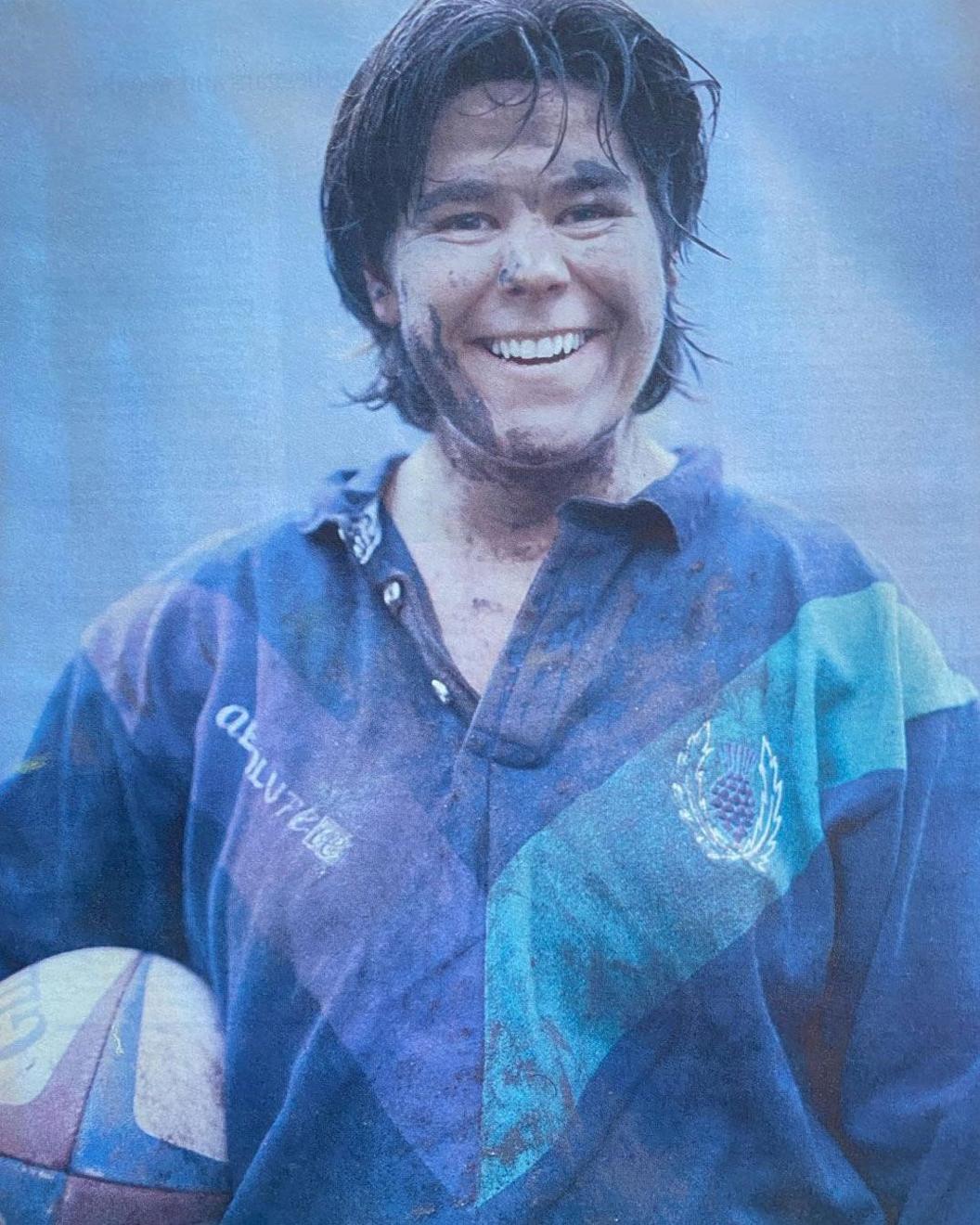
Sheila Scott fulfilled her ambition to play for Scotland
Sheila Scott was in the Heriot Watt University team but busy with her final year project for her Building Services Engineering degree when the phone rang.
"Two weeks before my final dissertation was due, I got a phone call from the coach who said 'what are you doing in the next two weeks? Do you want to come and play in a Rugby World Cup?' The answer obviously was 'yes'."
Spain had dropped out at the last minute so a Scottish Universities team filled their place in the group.
Sheila still has the "heavy cotton" jersey she proudly pulled on to play for Scottish Universities.
“It was incredible,” she says.
"It was so exciting, you didn’t care about anything else, and it ignited a passion in me to stick in and train hard and get into the Scotland international team and get to some more tournaments."
It was an ambition Sheila fulfilled, by the next World Cup, she was playing for Scotland.
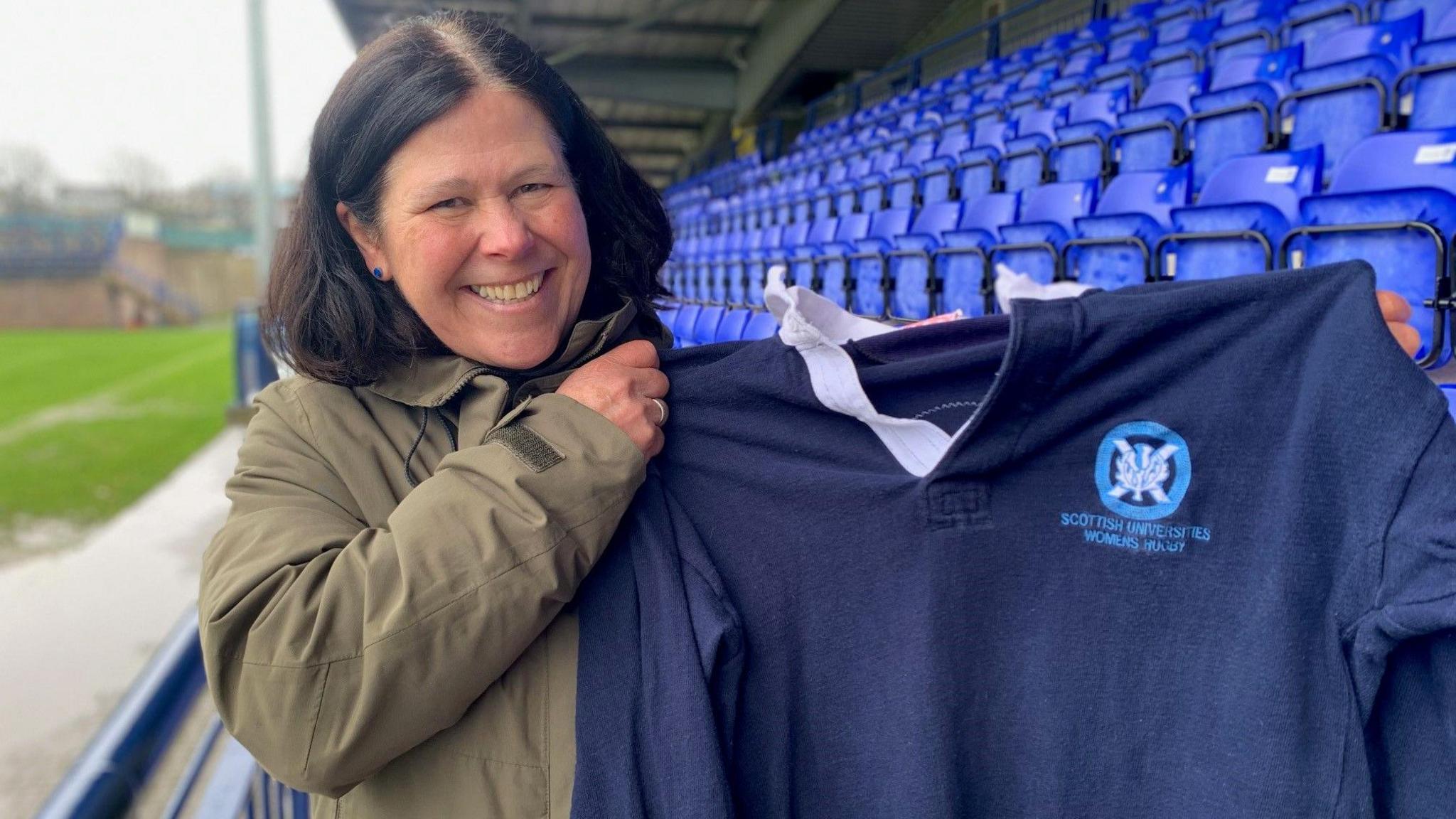
Sheila still has the heavy cotton jersey she pulled on to play for the Scottish Universities team
The 1994 tournament ended with England beating the defending champions USA 38–23 in the final.
Scotland finished a creditable fifth after winning the "shield" competition for teams knocked out in the quarter-finals.
There’s now a stage play called 90 Days telling the story of how the World Cup competition was staged in Scotland.
It is premiering at the Traverse theatre in Edinburgh this weekend.
In the spirit of 1994 the idea of putting on a play was sparked by some of the players from that time, and then crowdfunding and sponsors were found to make it happen.
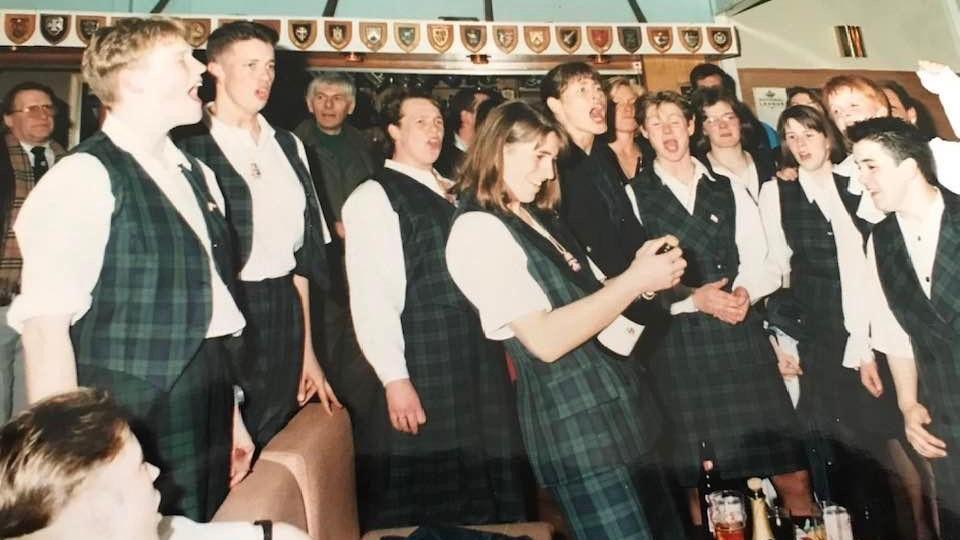
Kim Littlejohn remembers the Black Watch tartan uniforms they wore after the games
For a time in 1994, these women became the rock stars of the rugby world.
Kim Littlejohn says women’s rugby had visibility, it was on the telly, and it encouraged more and more women to get involved throughout Scotland.
Women’s rugby clubs sprung up from the borders to the islands.
Going into her bag she pulls out, not a rugby top, but a Black Watch tartan skirt.
“This was part of our post match uniform” she says.
"Again it was donated to us, and the photos we’ve got, all in our matching Black Watch uniforms, celebrating everything about that world championships, it was so good, it was an opportunity we had to take, we learned from it and it was a great experience for us, and how happy we were.”